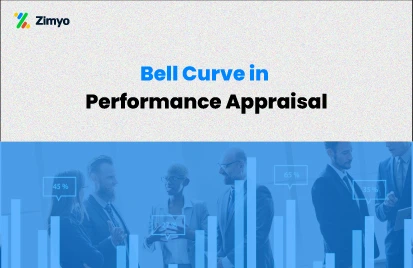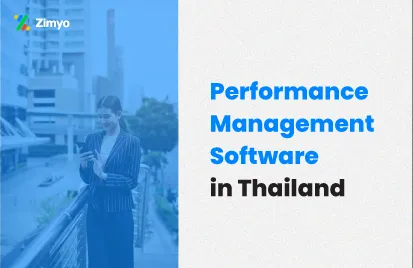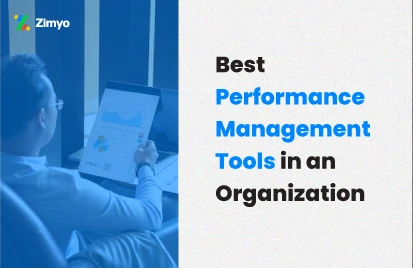In today’s technologically enhanced world, performance management has successfully proved as quite a useful process in managing the activities, engagement, and output of the employees. Let’s see how.
What Is Performance Management?
Let us first understand that organizations intervene in the complex process of structuring, planning, expectations, and monitoring. Traditionally, it was a time-consuming, descriptive, and monotonous process, as customization took a lot of time. Moreover, the process is quite elaborate for the HR department.
To assess the performance of a particular employee, one needs to evaluate the various parameters as listed below:
– Structuring and planning of the task
– Execution
– Monitoring
– Development and Improvement
– Quarterly or Yearly Rating (as per policies of the organization)
– Rewards and Recognition
Purpose of Performance Management
The ultimate goal of Performance Management (PM) is to improve communication and lastly performance of the employees that in turn, increases the productivity of the organization. It applies unanimously to all the departments of the organization. Also, it sets the period to achieve specific targets assigned to a particular department. If the performance is lacking, then the team seeks the help of the manager in improvisation.
Performance Management Is Directly Proportional To Revenue & Output Of the Organisation.
If we see, PM is directly proportional to the revenue of the organization. Let us decode the above statement. If the PM of the organization is diminishing or having a downward trend, then it has significant falls on the part of communication. Thus, the attrition curve of the employees will go upwards.
It directly impacts the revenue growth of the organization. However, when the PM is amplifying or increasing, that can be evaluated from the assessment forms. Evaluating the attrition curve, it gets deduced that the organization is performing well, and the communication is transparent between management and employees.
Introduction of SaaS Enabled HR Tools
SaaS Software as a service has received many recognitions and acclaims in the past few years. Moreover, SaaS enabled tools have been declared as a mandatory requirement nowadays. SaaS-enabled software tools help the organization save time and reduce paperwork. To top it off, this software has an option to customize as per your requirement.
Suppose your employee is not attending office and is required to submit a letter or an email. Now, with the SaaS Enabled Software, all you have to do is log in to that particular account. It contains an employee profile, account, and his or her performance and activities. Therefore, with the help of SaaS-enabled tools for HRM, it becomes extremely beneficial, easy, and accurate. Moreover, one can customize the HRMS or human resource management software as per the needs of the organization.
Accuracy Of SaaS-Based Tools In Performance Management.
Employers of various organizations today are looking for better technological solutions that will enhance performance management. To make the process more user-friendly, the HR Department is adopting SaaS-based HR Tech tools.
Accessing The Employee Login From Anywhere And Review 360-Degree Performance Alongside Peer Reviews
With so many alterations that have taken the world aback, many organizations are preferring employees to switch to working remotely. Many organizations are opting for work from home in today’s Coronavirus pandemic times. Here, the significant impact falls on the performance of the HR department as the attendance and performance of the employees are evaluated.
With the incorporation of SaaS-enabled HR Tools by Zimyo, you don’t have to worry. It incorporates various vital aspects, like setting SMART goals and tracks the performance of the employees. It also enables the HR Department to customize reviews and create assessment sheets as per various organizational departments. When creating goals for the employees, it should be more towards the automation and assigned KRA, KPI & competencies. The next crucial point is behavior dynamics – it includes the observation of employee behavior on the job; further, it promotes succession planning of the particular department.
360 Degree reviews and peer reviews – How can one assess the review system when employees are working remotely? By the introduction of SaaS-enabled HR software, it becomes like a piece of cake. All the review sheets and assimilation of assessment sheets get submitted through it.
Plus, the software is low cost and multi-rater performance evaluator, which improves management, leadership, and employee competencies to the core. Larger or smaller companies use traditional methods for 360 reviews, which is expensive and takes up too much time. It is high time we replace them with effective SaaS software techniques.
Information Accumulated At a Central Place
With SaaS-based software, another critical benefit is all information gets gathered at one central place. So, it becomes easy to track the employee’s attendance who has been in the organization for years. It is otherwise too tedious as a process. With the introduction of automated systems, it becomes effortless to access the performance and attendance of the employees.
Hence to conclude, this is the transitional period for the organizations, and SaaS-enabled HRM software tools from Zimyo will help them in achieving the target more accurately and swiftly. It helps in creating measurable performance-based expectations from the employees, their goals, performance planning, and also defining job development plans. During the yearly review, it helps with 360-degree review and peer reviews along with customized review systems. So, enabling your organization with Saas enabled HRM software to induce organization helps them grow stable.




